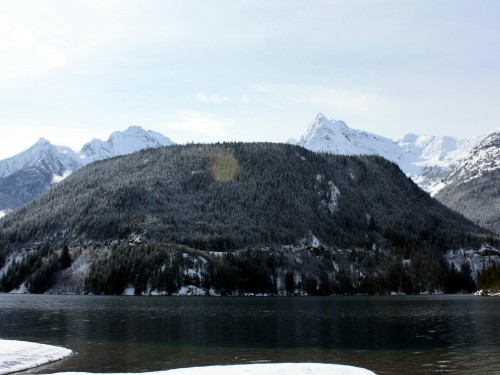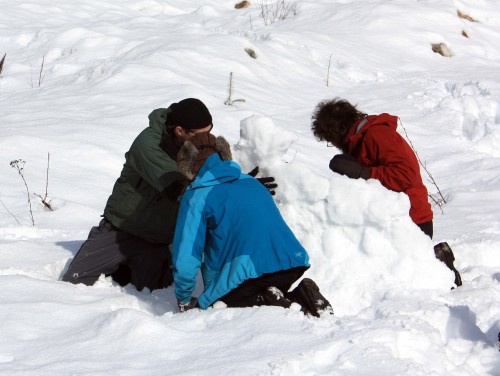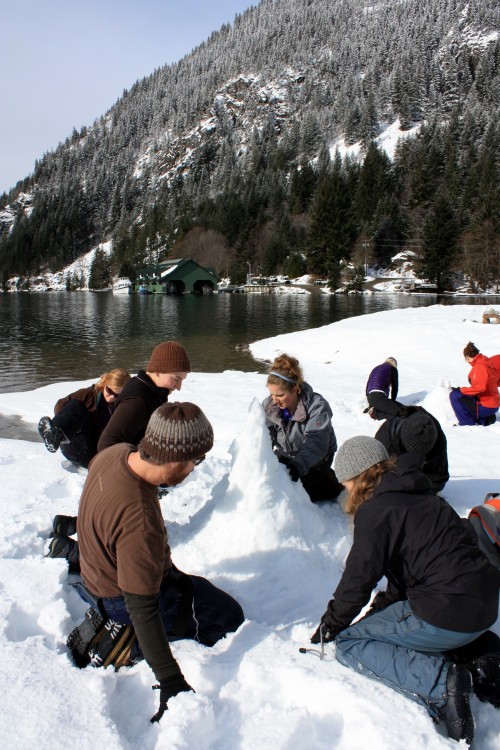Finding Our Inner Child

Despite the fact it seems like we just said goodbye to the final fall Mountain School group only a few weeks ago, the spring season is fast approaching. Staff and graduate students at the North Cascades Environmental Learning Center  began spring Mountain School training on February 28th to share new ideas for programming, reacquaint ourselves with fun logistical details, and immerse some new team members in the curriculum.
The snow we have been blessed with over the last few weeks—though unfortunately intermixed with rain most days—has added an interesting element to the training.  Our first group of students will arrive in a week, and there is a possibility that snow could be on the ground—which could take some of our Mountain School lessons to a whole new level.
One of our favorite predator-prey games, camouflage—hide and seek where the seeker cannot move, and the hiders must be able to see the seeker—could be much easier for the seeker, with little vegetation showing to hide their ‘prey’. And teaching students about our native plants, such as salal and Oregon grape, would probably involve some snow excavation. However, the snow is a delightful boon for one of our glaciology lessons. Two other graduate students and myself were responsible for leading training last Friday, and I happily volunteered to oversee our lesson on how glaciers sculpt mountains.

Mountain school instructors crafted snow mountains below the watchful gaze of Colonial & Pyramid Peaks
Instead of following our standard protocol of building miniature mountains out of small rocks along the shore of Diablo Lake, I had my fellow instructors sculpt mountains out of snow. A little friendly competition never hurts in a mountain-building contest, and each team met the challenge. The snow enabled us to craft larger, more creative peaks than the sand, pebbles, and gravity normally allow.  Snow is also an excellent medium for demonstrating how glaciers (in our case, ice-bricks filled with small rocks) carve U-shaped valleys and cirques into mountains as they retreat and advance in size.

Some groups chose to build mountains resembling ramparts
In addition to the great educational environment the snow provided to illustrate this lesson, it also allowed us an opportunity to get in touch with our inner child. Creations were christened with appellations like Jenga Peak, Mount Krummholz and MyMountainIsBetterThanYours.  The lesson also ignited the excitement and anticipation of Mountain School students returning to the Learning Center. As wonderful as it is to be here through the quiet solitude of the winter months, the energy that fifty fifth-graders can bring to the Learning Center is indescribable. Whether or not there is snow on campus on March 21st, we know the official start of spring will bring with it an explosion of vitality. And we will be eagerly waiting for our first group of students to arrive, perhaps with snowballs in hand.


